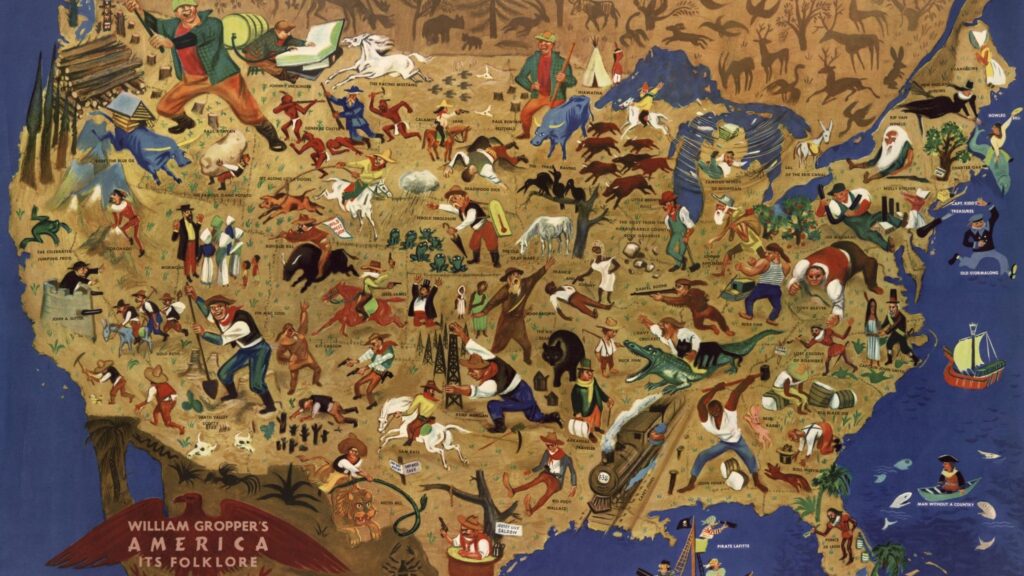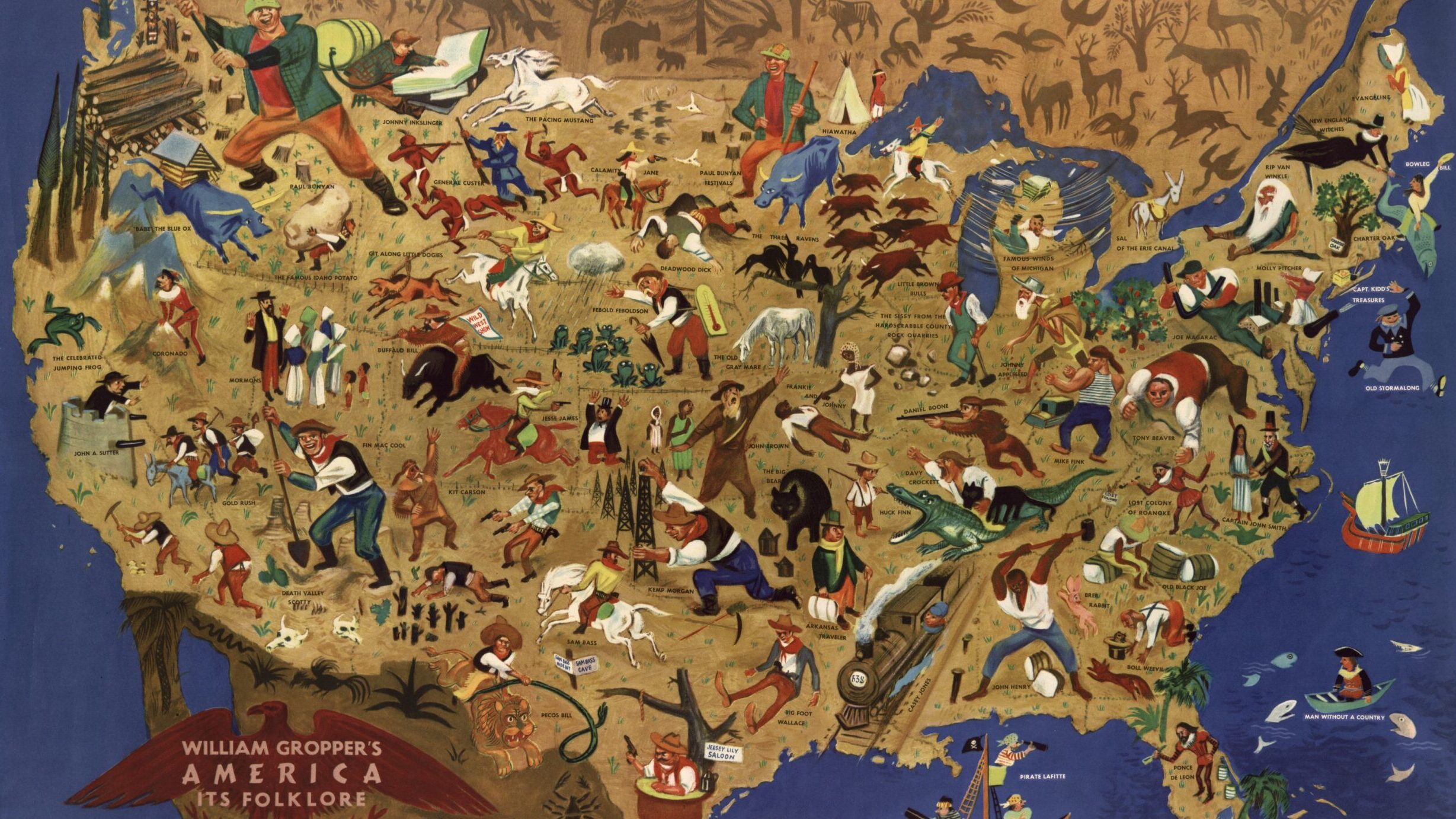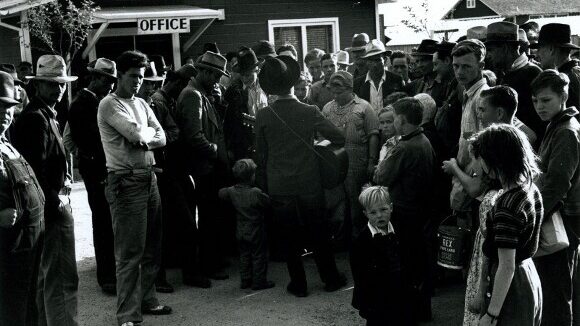
This is the second installment in a three-part series about the music and impact of Harry Smith’s seminal 1952 compilation, Anthology of American Folk Music. Check out Part I and Part III.
On the surface, the nation that Harry Smith released his Anthology of American Folk Music into, and the one in which its songs had been recorded in, were two wildly different places. After all, the Second World War had left the United States in the position of a global superpower, and the years that followed on its heels found the nation in the midst of unprecedented economic growth. However, a downside of modernity could be found in the long nuclear shadow that hovered over the globe, particularly after the Soviet Union tested its first atomic bomb in the summer of 1949.
In stark contrast – and like seemingly everything else about their lives – the concerns expressed by the artists represented on Smith’s Anthology must have seemed positively quaint by comparison to the Americans of 1952. The thing is, whether by way of the boll weevil or the hydrogen bomb, a threat to one’s very existence has an uncanny way of occupying their every waking thought; besides, a death by a thousand cuts is no more or less tragic than one of biblical proportions.
Just as Americans of the Cold War era would search for an opiate to their anxieties, so too would the rural southerners of Smith’s Anthology. Similarly, they would find such comfort in the form of music and religion, but whereas the fifties largely saw those twin balms drifting further and further apart, song and spirituality were were deeply intertwined in Harry Smith’s America. It’s that dynamic which is emphasized in the Anthology‘s second volume, Social Music.
Of the three volumes of the Anthology of American Folk Music, Social Music is arguably the toughest for which to find an entry point. Several of its songs are strictly instrumental, and just as Smith played the part of historiographer in detailing the evolution of the Ballads in the first volume, these tracks find him offering up nuanced analysis of their compositional and performance merits. Though Social Music may be the most tempting volume to approach from an academic level, to merely appreciate it is to severely underestimate its value. More so than either Ballads or Songs, the recordings on Social Music were made to be felt.
Acutely, Smith chooses to open Social Music with the familiar melody of “Sail Away Lady” (Disc 3/Track 1), as performed by the Tennessee fiddler, “Uncle Bunt” Stephens. Whereas most of the tracks on Social Music are ensemble pieces, the solo nature of Stephens’ recording – one of six sides that he cut during a 1926 session for Columbia – reinforces the idea that even a lone performer can perform truly “social” music.
If “Sail Away Lady” represents the entry point for Social Music‘s traditional dance numbers, “Indian War Whoop” (D3/T7), by Floyd Ming and His Pep-Steppers, stands as its apex. An ensemble performance that matches stringed instruments (violin, guitar, and autoharp) with wild foot percussion, the track is little short of transcendent, even if Smith correctly notes, “it is doubtful if this recording bears much real relation to [Native American] music; it is, rather, romanticism akin to that of ‘western’ movies.” Regardless of its lack of “authenticity,” there is little in pre-war American music that could be reasonably described as evoking psychedelia. This is a most notable exception.
A recurring theme throughout the Anthology is Harry Smith’s deep affection for the so-called “Arcadian” music of Depression-era Louisiana. Several Cajun songs stand alongside the set’s highlights, and among the instrumental tracks on Social Music, few are as enchanting as “La Danseuse” (D3/T4), a 1929 foxtrot recording by Delma Lachney and Blind Uncle Gaspard. Weaving a fluid violin melody and bright guitar chords together, “La Danseuse” proves a fine representative of an oft-overlooked American culture.
One of the central figures of pre-war Arcadian music, Joseph Falcon would (alongside his wife, Cleoma) make multiple appearances on the third volume of the Anthology, Songs. However, his contribution to Social Music arguably stands as the best expression of his unique styling. Based around a jaunty accordion melody, “Arcadian One-Step” (D3/T11) may be steeped in tradition, but there is a vitality to the recording that remains wholly refreshing.
The gospel recordings that comprise much of the second Social Music disc represent a sharp detour from the largely upbeat numbers that make up the first disc. Being whisked away from the celebratory sounds of Arcadian dance music to the reverent tones of traditional Black gospel is disorienting, to say the least. More so than anywhere else on the Anthology, listening to these tracks can create a sensation of being an observer, as opposed to a participant. However, more song-oriented numbers, such as the Rev. Sister Mary Nelson-led “Judgement” (D4/T6) provide plenty of intrigue. The intensity of Nelson’s devotion is little short of arresting, even a century after its documentation.
While dance and religious numbers dominate the two discs of Social Music, there are a handful of recordings that hew closer to the traditional blues, folk, and country tracks of the Ballads and Songs volumes. Unsurprisingly, these comprise some of the most immediately resonant pieces of the middle set. In fact, few songs in the entire six-disc collection are as gripping as Blind Willie Johnson’s “John the Revelator” (D4/T11). In time, Johnson would become one of the break-out “stars” of the Anthology. In this track, Johnson’s legendarily gruff vocals are given a fascinating counterpart by the accompanying work of his wife, Willie B. Harris. Like Mary Nelson before him, Johnson’s conviction is palpable in this recording, making for one of the obvious highlights of the Social Music set.
Also in the vein of Ballads and Songs is a 1928 B-side from the Mississippi bluesman, Jim Jackson. Jackson was one of the more prolific “songsters” of his era, recording for both the Vocalion and Victor labels, and attaining a greater degree of recognition than most of his contemporaries. Though based on a traditional dance number, there is nothing celebratory about Jackson’s “Old Dog Blue” (D3/T9). Somehow, in an eighty-four song collection that documents all manner of human tragedy, it’s quite possible that the saddest single track finds a man solemnly mourning the death of his loyal hound dog:
Old Blue died and I dug his grave
I dug his grave with a silver spade
I let him down with a golden chain
And every link I called his name
Go on Blue you good dog you
Blue laid down and died like a man
Now he’s treein’ ‘possums in the promised land
I’m goin’ to tell you this jes’ to let you know
Old Blue’s gone where the good dogs go
When I hear old Blue bark
Blue’s treed a ‘possum in Noah’s ark
While tracks like “Old Dog Blue” and “Judgement” lend a certain degree of gravity to the set, the lasting impression created by Social Music is one of an uplifting nature. Smith returns to his original thesis on the volume’s closing stretch of songs, trading the weightier religious material of its middle section for some of the most exultant recordings imaginable.
The first of these is from Bascom Lamar Lunsford, a North Carolina folk singer. While “Dry Bones” (D4/T10) doesn’t quite trade in as surrealistic of imagery as Lunsford’s masterpiece – which we’ll discuss in the third installment of this series – the bright strains of his banjo, combined with a spirited vocal performance, make for a rather striking listen. To call it poignant is a dramatic undersell.
The celebratory nature of Social Music reaches something of a climax with its penultimate track: Rev. F.W. McGee’s rendition of “Fifty Miles of Elbow Room” (D4/T14). Though presented with the fidelity of a “field recording,” the congregational performance is little short of infectious. In the liner notes for his Anthology, Harry Smith proposed extending the project to three subsequent volumes exploring “rhythmic changes between 1890 and 1950.” This electrifying recording could have stood as a centerpiece for such an endeavor, with its combination of religious messaging and secular rhythmic impulses.
Every bit as indebted to contemporary secular trends is Social Music‘s closing track: Rev. D.C. Rice and His Sanctified Congregation’s 1929 recording, “In the Battle Field for My Lord” (D4/T15). Those left unaffected by the earlier religious tracks are unlikely to find themselves singing praises by song’s end, but it’s difficult to not be moved by the passion on display in the piece. By 1929, the rural south had endured a decade of hard economic times. Much of the region had been devastated by the catastrophic Mississippi River Flood of 1927. The very members of Rice’s congregation faced demoralizing segregation in virtually every aspect of their lives. And yet, in these three powerful minutes of music, the spirit remains undaunted and ready for battle.



